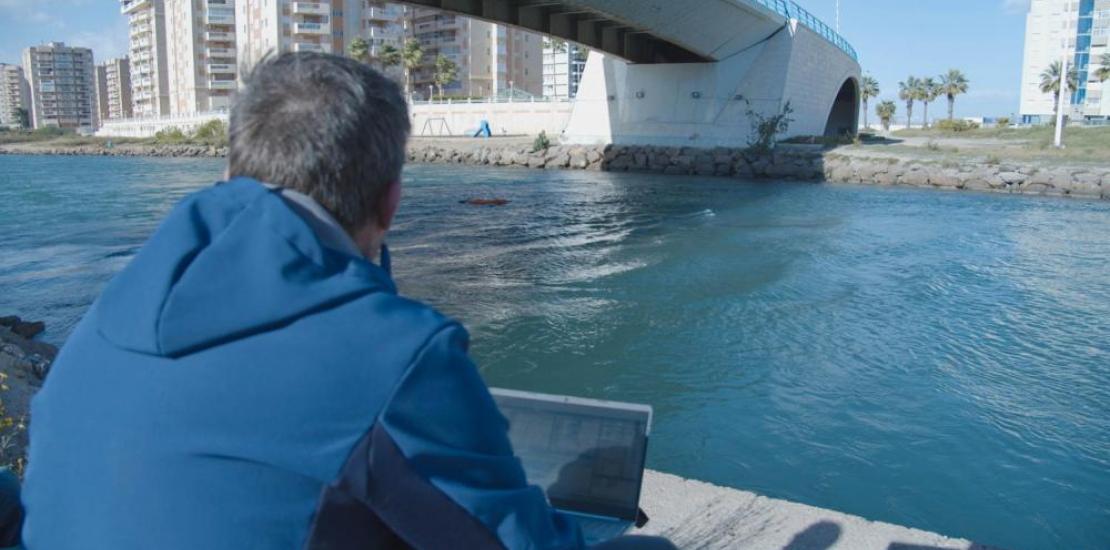UCAM monitors real-time water exchange between the Mediterranean and the Mar Menor for the first time
The SMARTLAGOON project has increased the data collection thanks to the installation of two new cameras, located in the Marchamalo and El Estacio canals.
UCAM researchers and the Swiss partner company of the h2020 SMARTLAGOON project, Photrack installed two new cameras under the El Estacio and Marchamalo bridges, located at the beginning and end of La Manga.
These devices will provide real-time data on the exchange of water between the Mar Menor and the Mediterranean Sea for the first time.
The cameras will measure the images collected through Discharge Keeper, a software developed by the Swiss company that measures the surface velocity profile of water. Data is collected by means of an image processing technique or by means of an external level sensor.
In this case, an aquatic drone has been used to obtain the bathymetry, a measurement of the current sea depth of both channels.
Digital twin to protect the Mar Menor
The Mar Menor has five gullies or channels, two natural and three artificial, connecting it directly with the Mediterranean Sea. The researchers selected the El Estacio and Marchamalo canals, as they are the ones that exchange the greatest amount of water due to their size.
Javier Senent, Principal Investigator of the project, stressed that ‘real- time and continuous knowledge of the water exchange taking place between the Mar Menor and the Mediterranean Sea is essential to reduce the uncertainty associated with the lagoon's water balance, given that this exchange of water is, next to evaporation, the most important one from a quantitative point of view’.
This information will be added to the real-time information obtained from different watercourses in order to know the flows draining into this saltwater lagoon. And all the information will be added to the data obtained by the analytical buoy recently installed in the lagoon, in order to address the complex challenge of developing a digital twin of the Mar Menor.
In addition, all the technology obtained at the end of the SMARTLAGOON project, research funded by the European Commission, will be handed over to public administrations so that they can take the most accurate and effective measures to protect the Mar Menor.




